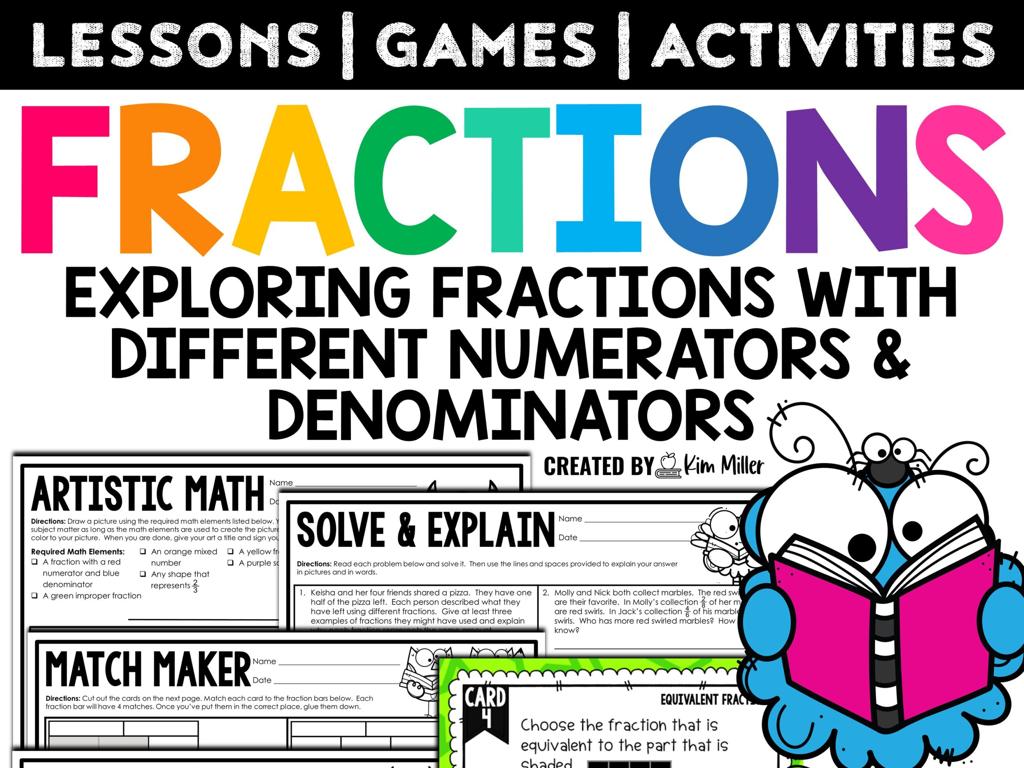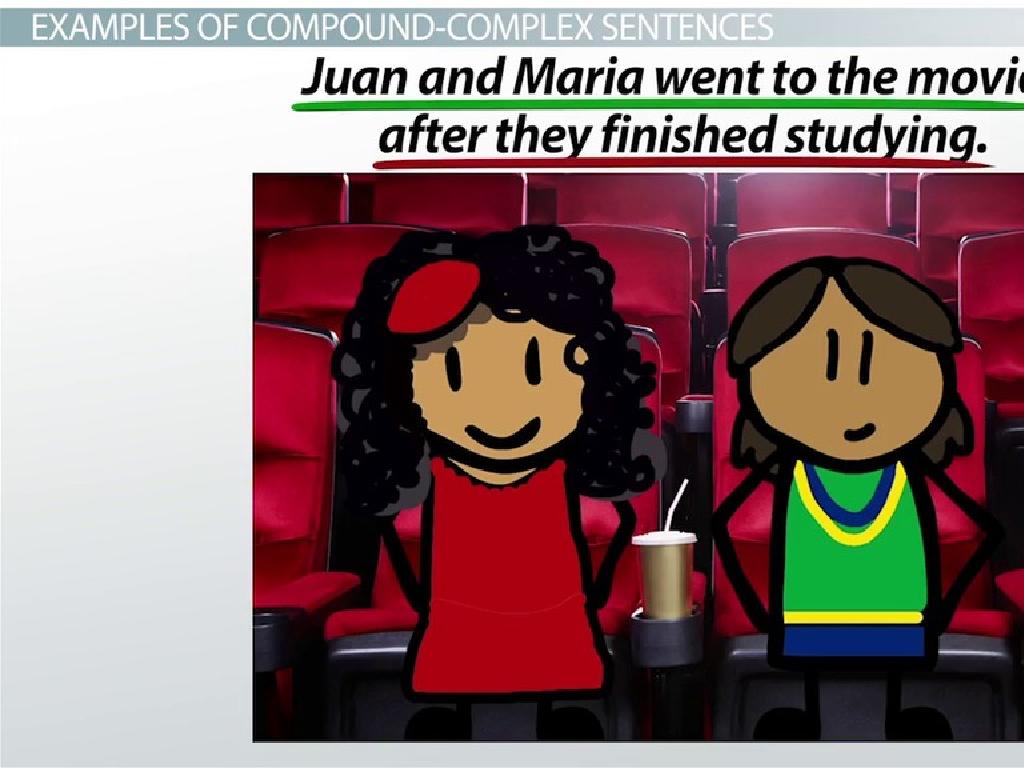One-Step Inequalities: Word Problems
Subject: Math
Grade: Sixth grade
Topic: One-Variable Inequalities
Please LOG IN to download the presentation. Access is available to registered users only.
View More Content
Introduction to One-Step Inequalities
– Understanding inequalities
– Inequalities show how one value is less or greater than another.
– Inequalities vs. equations
– Equations show equality, inequalities show a range of possible solutions.
– Real-life inequality examples
– Budgeting allowance, or temperature falling below freezing.
– Solving one-step inequalities
– Use addition or subtraction to find the value of a variable.
|
Begin the lesson by explaining that inequalities are statements that show the relationship between different quantities, specifically how one is less than, greater than, or not equal to another. Compare and contrast inequalities with equations to highlight the difference in how they are solved and interpreted. Provide relatable examples such as budgeting a weekly allowance or temperatures in weather forecasts to illustrate how inequalities are present in everyday life. Finally, introduce the concept of solving one-step inequalities using inverse operations, setting the stage for more complex problem-solving in future lessons. Encourage students to think of other real-life situations where inequalities are applicable.
Understanding Inequality Symbols
– Greater than (>) and less than (<)
– 'At least' and 'no more than'
– e means 'at least', d means 'no more than'
– Real-life symbol applications
– Comparing test scores, prices, or ages
– Practice with word problems
– Solve problems using these symbols
|
This slide introduces students to the basic inequality symbols and their meanings. The symbols > and < are used to compare two values, indicating which one is larger or smaller. The symbols e and d include the possibility of being equal to the value, which can be thought of as 'at least' or 'no more than'. It's crucial for students to understand how these symbols are used in real-life situations, such as comparing test scores, prices, or ages. Encourage students to think of examples where they might use these symbols outside of the classroom. To reinforce learning, provide word problems that require the use of these symbols to find a solution. This will help students apply their understanding in a practical context.
Translating Words to Inequalities
– Recognize inequality phrases
– Phrases signal , d, or e
– ‘At least’ means e
– e.g., ‘at least 5 apples’ means 5 or more apples (5 d apples)
– ‘No more than’ means d
– e.g., ‘no more than 10 books’ means 10 or fewer books (books d 10)
– Practice with word problems
– Convert phrases to mathematical inequalities
|
This slide introduces students to the concept of translating verbal phrases into mathematical inequalities. Key phrases often found in word problems can indicate the type of inequality to use. For example, ‘at least’ suggests a minimum value, so we use e. ‘No more than’ implies a maximum value, so we use d. Provide students with practice problems where they translate sentences with these phrases into inequalities. Encourage them to think about the logic behind each phrase and what it means for the numbers involved. In the next class, students can share their solutions and discuss any challenges they faced.
Solving One-Step Inequality Word Problems
– Identify the unknown variable
– Determine what we are solving for, e.g., ‘x’ represents the number of apples
– Formulate the inequality
– Translate the problem into a mathematical statement, e.g., ‘x > 5’
– Solve the inequality
– Perform operations to find the value of ‘x’
– Check and interpret the solution
– Ensure the solution makes sense in the context of the problem
|
This slide is aimed at guiding students through the process of solving one-step inequality word problems. Start by identifying the unknown variable, which is what we are trying to find. Next, translate the word problem into an inequality, using symbols like ‘>’, ‘<', 'e', or 'd'. Then, solve the inequality by performing the appropriate mathematical operations. Finally, check the solution by substituting it back into the inequality to ensure it makes sense within the context of the problem. Encourage students to practice with different word problems and to always consider the real-world meaning of their mathematical solutions.
Solving One-Step Inequality Word Problems
– Understand the problem context
– Alex needs $50 for a trip; he has $45.
– Write the inequality
– Represent the problem: 45 + x e 50.
– Solve the inequality
– Find the minimum amount Alex needs: x e 5.
– Interpret the solution
– Alex requires at least $5 more for the trip.
|
This slide introduces students to solving one-step inequalities through a practical word problem. Start by reading the problem carefully and understanding what is required – in this case, Alex needs a certain amount of money for a field trip. Teach students to translate the problem into an inequality, then solve for the unknown variable. Emphasize the importance of interpreting the result in the context of the problem, which helps in understanding the real-world application of inequalities. Encourage students to practice with similar problems and to always check their solutions by substituting the value back into the original inequality.
Practice Problems: One-Step Inequalities
– Solve one-step inequalities
– Use inverse operations to find the solution
– Explain your reasoning
– Justify each step taken to solve the inequality
– Class discussion of solutions
– Share different approaches and answers
– Reinforce inequality concepts
|
This slide is aimed at providing students with practice problems on one-step inequalities to solidify their understanding. Students should use inverse operations such as addition, subtraction, multiplication, or division to isolate the variable and solve the inequality. Encourage them to explain their reasoning for each step, which promotes critical thinking and a deeper understanding of the process. After individual work, bring the class together to discuss the solutions. This will allow students to see various methods of solving the same problem and understand that there can be multiple ways to reach the correct answer. As a teacher, be prepared to guide the discussion, correct misconceptions, and provide praise for correct reasoning. Possible activities include solving problems on the board, peer review, or group work where each group solves different inequalities.
Class Activity: Inequality Scavenger Hunt
– Find objects representing inequalities
– Create inequalities from objects
– Use objects to form expressions like ‘x > 3’
– Solve the created inequalities
– Apply math skills to find the value of ‘x’
– Discuss findings with the class
|
This interactive activity is designed to help students understand one-step inequalities through a hands-on approach. Students will search the classroom for items that can represent inequalities, such as a stack of books to represent ‘greater than’ or a line of desks to represent ‘less than’. After finding these objects, they will create and solve an inequality that the object might represent. For example, if a student finds 5 markers, they could write ‘x < 5' if they are asked to find an inequality for fewer markers than what's found. Once they have solved their inequalities, students will share their findings with the class, explaining the reasoning behind the inequalities they created. This will reinforce their understanding of inequalities and how they apply to real-world situations. Possible variations of the activity could include finding objects to represent 'greater than or equal to' or 'less than or equal to', depending on the objects available in the classroom.
Wrapping Up: One-Step Inequalities
– Recap: Solving one-step inequalities
– Review how to solve inequalities like x + 3 > 5
– Inequalities in daily life
– Discuss how budgeting or cooking uses inequalities
– Homework: Inequality worksheet
– Solve problems on provided worksheet for practice
|
As we conclude today’s lesson, remind students of the key steps in solving one-step inequalities and reinforce the concept by solving a couple of examples together. Emphasize the real-world application of inequalities, such as maintaining a budget or following a recipe, which requires understanding amounts that are more or less than a certain number. For homework, assign the worksheet on one-step inequalities to reinforce today’s lesson. This will provide students with additional practice to solidify their understanding. Encourage them to attempt every problem and remind them that struggling with a problem is a part of the learning process. In the next class, we can review any challenging problems from the homework.






